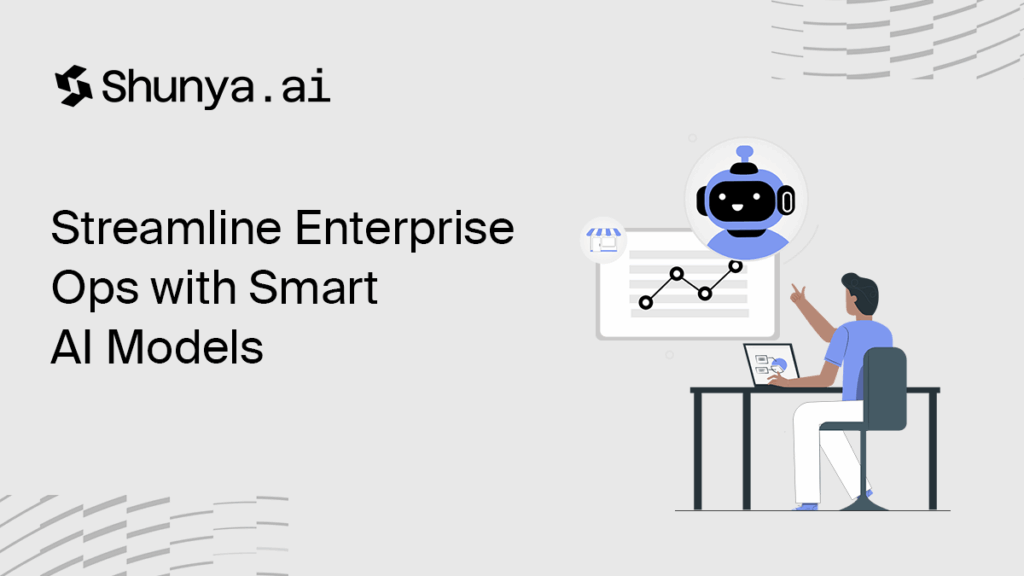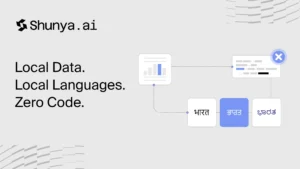Blog Summary
|
Let’s be honest—AI has been a buzzword in boardrooms for years. But what’s different now? Large Language Models (LLMs) are finally doing the work. From summarising complex reports to automating entire customer support flows, LLMs for enterprise automation are moving from pilot projects to production pipelines.
What’s even more exciting? Enterprises aren’t using them to just save time—they’re rethinking how work gets done.
What Enterprise Automation Really Looks Like in 2025
It’s not just about robotic process automation (RPA) anymore. We’re talking:
1. Natural Language Workflows
Imagine sending an email like this:
“Create a weekly report on ticket escalations and summarise key delays.”
And the system replies:
“Here’s your report, sorted by priority, with timestamps and next steps.”
LLMs can now take plain English (or Hindi, or Hinglish) and turn it into structured outputs.
2. Human-in-the-Loop Workflows
LLMs don’t replace humans—they amplify them. Think:
- A marketing team generating first-draft campaign emails
- Legal teams scanning contracts for anomalies
- Operations teams flagging logistics issues before they escalate
You still make the final call—but you get there faster.
3. Multilingual Interactions
In India, automation can’t be English-only. Enterprises need systems that understand Hindi, Tamil, Kannada, and more.
That’s where Multilingual AI chatbots and language-aware LLMs shine. (Check out our blog on Multilingual LLM in India)
Key Use Cases: Where LLMs Are Already Making a Difference
| Department | Use Case |
|---|---|
| Customer Support | Auto-replies, summarised chat histories, escalation triage |
| HR | Resume screening, policy Q&A bots, exit analysis |
| Finance | Invoice parsing, ledger reconciliations, report writing |
| Product | Feature request clustering, roadmap summarisation |
| Legal & Compliance | Contract review, risk alerts, policy enforcement |
| Logistics | Shipment exception handling, address correction, delay predictions |
Why Enterprises Need Purpose-Built LLMs
Let’s be clear—general LLMs (like GPT-4 or Claude) are powerful, but they’re not built for your workflows out of the box. Here’s what enterprises actually need:
- Context Awareness: Models that understand your org’s SOPs, glossary, and customers.
- Data Privacy: No sensitive data leaks to public APIs. Think on-premise or private-cloud setups.
- Task Alignment: No “creative” answers. Just crisp, factual, action-ready outputs.
Shunya.ai: Smarter Automation, the Bharat Way
At Shunya, we believe AI should fit into the way Indian businesses operate—not the other way around.
That’s why we’ve built:
- Multimodal enterprise LLMs trained on Indian workflows
- No-code automation tools for everyday teams (Ops, HR, Finance)
- Voice, chat, and text support in multiple Indian languages
- Compliance-ready infrastructure that keeps your data secure
Whether it’s summarising warehouse activity in Hindi or flagging GST anomalies in real time—Shunya makes AI usable from Day 1.
How to Start: LLM Automation Doesn’t Have to Be Hard
Getting started with LLMs for enterprise automation doesn’t require a data science team or million-dollar contracts. Here’s a simple way forward:
- Pick one internal task you wish was faster.
- Feed real examples (emails, chats, documents).
- Use Shunya’s sandbox to train/test your workflow.
- Deploy with human checks and measure improvements.
Most teams see results within 2–3 weeks of deploying their first workflow.
Ready to Put LLMs to Work for Your Team?
Shunya makes it easy to go from idea to implementation—no technical setup, no long sales cycles.
Whether you’re exploring your first AI workflow or scaling automation across departments, you can start in minutes.
✅ Register for free on app.shunya.ai
LLMs don’t just follow rules—they understand context. They can summarise, classify, translate, or draft responses across unstructured data, unlike traditional bots that work only on structured inputs.
Internal documents, support tickets, emails, spreadsheets—anything your team already uses. Shunya helps clean, process, and train models on it securely.
Yes. Shunya’s LLMs are built with multilingual capabilities. They can understand and respond in English, Hindi, Hinglish, Tamil, and other regional languages.



